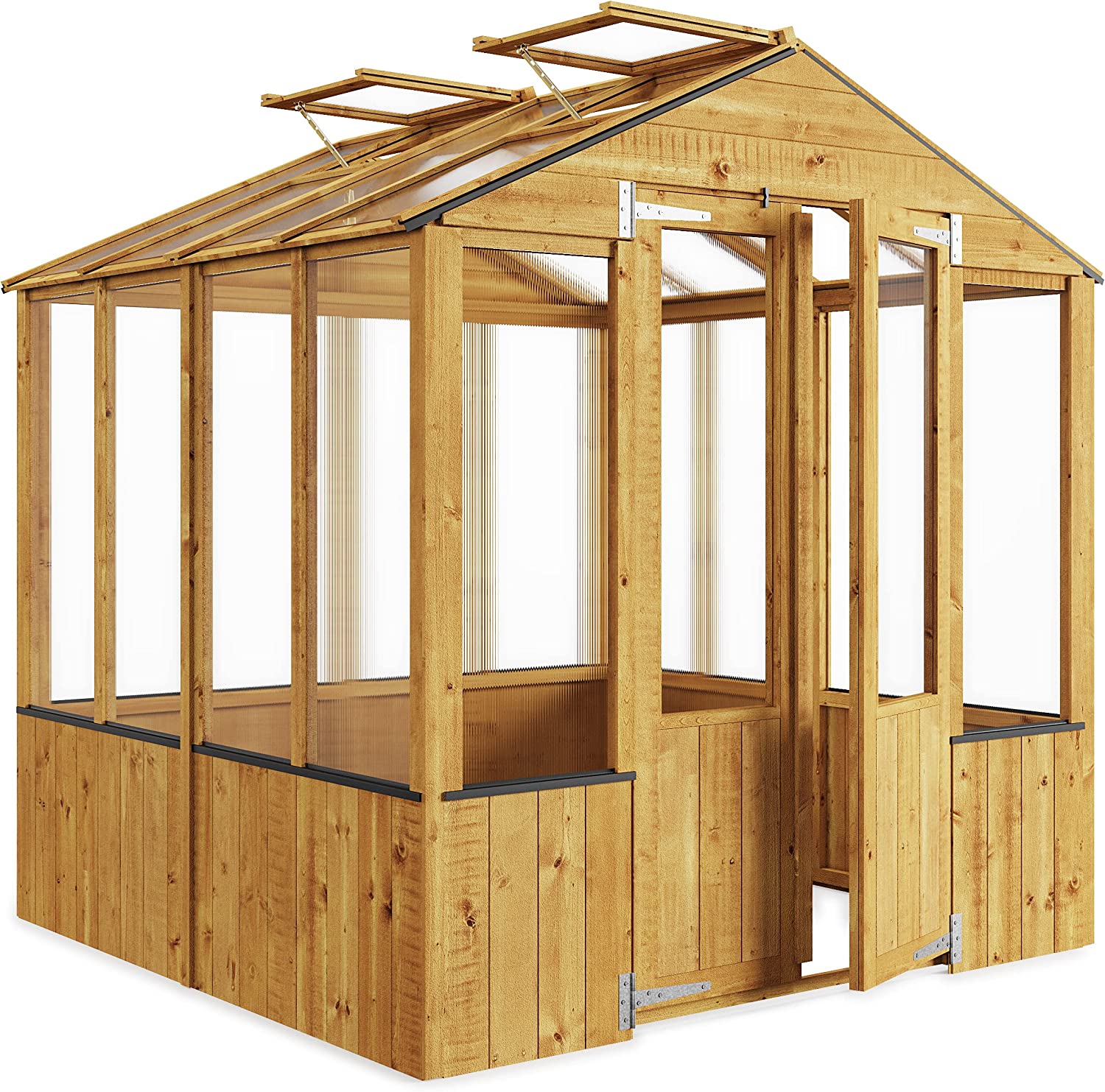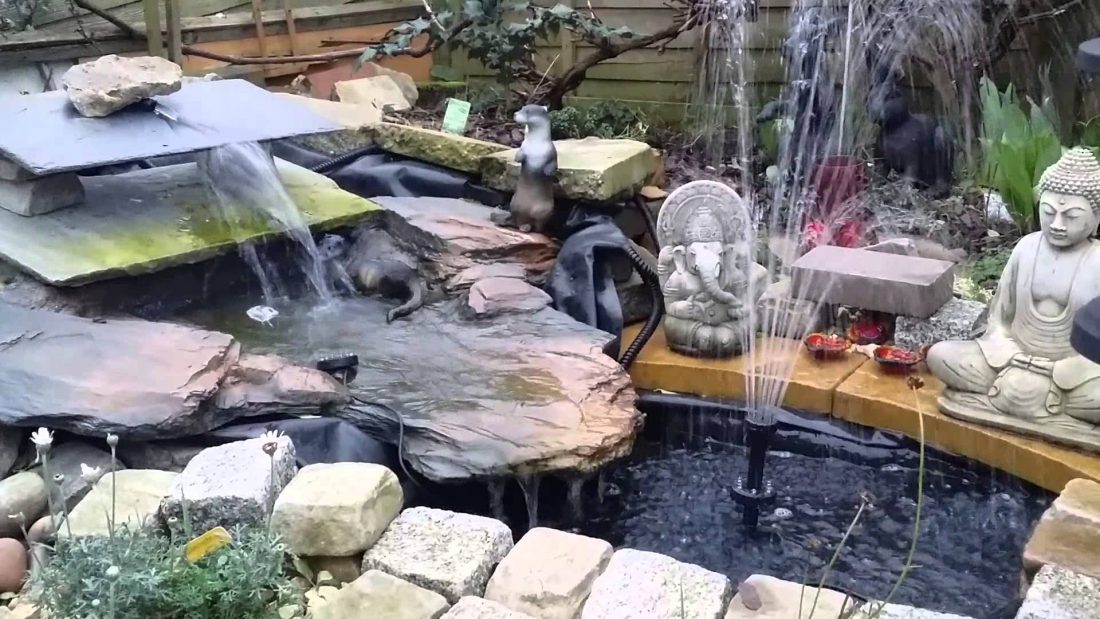Exploring the Benefits and Considerations of Plastic Greenhouses Plastic greenhouses have emerged as popular alternatives…

Growing Big in Small Spaces with Mini Greenhouses
Mini greenhouses are compact, versatile structures that allow gardeners to cultivate plants, herbs, and vegetables in small spaces such as balconies, patios, and even indoor environments. In the UK, where garden space can be limited, mini greenhouses offer an excellent solution for enthusiasts looking to grow their own produce or nurture their favorite flowers. These pint-sized garden sanctuaries provide protection from the elements, extend the growing season, and offer a convenient space for gardening experimentation and enjoyment.
Types of Mini Greenhouses
Mini greenhouses come in various designs and styles to suit different gardening needs and space requirements:
- Portable Mini Greenhouses: Portable mini greenhouses are lightweight and easy to move, making them ideal for renters or gardeners with limited outdoor space. They typically feature a collapsible frame and a transparent cover made from materials such as polyethylene or PVC.
- Lean-to Mini Greenhouses: Lean-to mini greenhouses are designed to lean against an existing structure, such as a wall or fence, maximizing space efficiency. They are perfect for small gardens, balconies, or courtyards where space is at a premium.
- Cold Frame Mini Greenhouses: Cold frame mini greenhouses consist of a low-profile, sloped frame with a transparent lid or cover that can be opened or closed to regulate temperature and humidity. They are ideal for hardening off seedlings, protecting delicate plants, or extending the growing season in colder climates.
- Miniature Growhouse Kits: Miniature growhouse kits are pre-assembled or DIY kits that include all the necessary components for setting up a mini greenhouse, such as frames, shelves, covers, and hardware. They offer convenience and simplicity for gardeners looking to get started quickly.
Key Considerations Before Buying
Before purchasing a mini greenhouse, consider the following factors to ensure it meets your gardening needs and space requirements:
- Available Space: Measure the available space where you intend to place the mini greenhouse, taking into account factors such as height, width, and depth. Choose a greenhouse size that fits comfortably within the designated area and allows for easy access and ventilation.
- Location and Sunlight: Consider the location of the mini greenhouse in relation to sunlight exposure and shading. Position the greenhouse in a spot that receives ample sunlight throughout the day, with minimal obstruction from trees, buildings, or other structures.
- Materials and Construction: Select a mini greenhouse constructed from durable, weather-resistant materials such as aluminium, steel, or treated wood. Pay attention to the greenhouse’s frame, cover, and hardware for strength, stability, and longevity.
- Features and Accessories: Look for mini greenhouses with features and accessories that enhance functionality and convenience, such as adjustable shelving, ventilation windows, zipped doors, and built-in irrigation systems. Consider your specific gardening needs and preferences when evaluating available features.
- Budget and Cost: Set a budget for your mini greenhouse purchase and explore options within your price range. Consider factors such as construction quality, durability, and additional features when assessing the overall value and return on investment.
Pros and Cons of Mini Greenhouses
Understanding the advantages and limitations of mini greenhouses can help you make an informed decision:
- Pros:
- Compact and space-saving design ideal for small gardens, balconies, and patios.
- Protects plants from adverse weather conditions such as frost, wind, and heavy rain.
- Extends the growing season, allowing for earlier planting and later harvesting of crops.
- Offers a controlled environment for starting seeds, hardening off seedlings, and nurturing tender plants.
- Portable and easy to move, allowing for flexibility in placement and seasonal storage.
- Cons:
- Limited space for larger or tall plants, restricting the variety and quantity of crops that can be grown.
- May require additional heating or insulation in colder climates to maintain optimal growing conditions.
- Less durable compared to larger greenhouse structures, requiring more frequent replacement or repair.
- May lack features such as built-in irrigation or automatic ventilation found in larger greenhouse models.
- Less energy-efficient than insulated or heated greenhouse options, leading to higher heating costs in colder months.
Usage Tips
To make the most of your mini greenhouse and ensure successful gardening outcomes, consider the following tips:
- Optimize Sunlight Exposure: Position the mini greenhouse in a location that receives ample sunlight throughout the day, especially during the morning and early afternoon. Monitor sunlight patterns and adjust the orientation or placement of the greenhouse as needed to maximize light exposure for plant growth.
- Provide Ventilation: Ensure adequate ventilation inside the mini greenhouse to regulate temperature, humidity, and airflow. Open doors or vents during warm weather to prevent overheating and condensation buildup, and close them during cooler temperatures to retain warmth and protect plants from frost.
- Water Wisely: Water plants consistently and evenly to maintain optimal soil moisture levels for growth and development. Use a watering can, hose, or drip irrigation system to deliver water directly to the root zone, avoiding foliage to minimize the risk of fungal diseases.
- Monitor Temperature and Humidity: Install a thermometer and hygrometer inside the mini greenhouse to monitor temperature and humidity levels. Adjust ventilation, shading, and watering practices accordingly to create a comfortable and conducive environment for plant growth.
- Protect Against Pests and Diseases: Keep an eye out for common greenhouse pests such as aphids, whiteflies, and spider mites, as well as fungal diseases like powdery mildew and botrytis. Implement preventive measures such as regular inspection, sanitation, and biological controls to manage pest and disease outbreaks effectively.
Shopping Online for Mini Greenhouses
When shopping for mini greenhouses online, consider the following tips to find the right one for your gardening needs:
- Explore Options: Browse through a variety of mini greenhouse designs, sizes, and configurations to find the one that best suits your space and gardening requirements.
- Read Customer Reviews: Read reviews from other buyers to gauge the quality, durability, and performance of the mini greenhouse. Look for feedback on assembly ease, weather resistance, and overall satisfaction with the product.
- Check Specifications: Review the greenhouse’s specifications and features to ensure it meets your gardening needs and space requirements. Pay attention to details such as dimensions, materials, ventilation options, and available accessories.
- Consider Brand Reputation: Choose mini greenhouses from reputable brands known for their quality craftsmanship, customer service, and warranty coverage. Research the brand’s reputation and customer reviews to assess reliability and satisfaction.
- Check Delivery Options: Confirm delivery options, shipping costs, and estimated delivery times before making a purchase. Consider factors such as assembly requirements, delivery restrictions, and additional services, such as installation or setup assistance.
Choosing the Right One
Choosing the right mini greenhouse involves considering your specific gardening needs, available space, budget, and personal preferences. Whether you opt for a portable design for flexibility or a lean-to model for space-saving convenience, select a greenhouse that offers the features, size, and durability to support your gardening aspirations.
Caring for Your Mini Greenhouse
To ensure the longevity and optimal performance of your mini greenhouse, follow these maintenance tips:
- Clean Regularly: Clean the greenhouse cover, frame, and shelves regularly to remove dirt, dust, algae, and plant debris. Use mild soap and water or a diluted vinegar solution to clean plastic or glass surfaces, avoiding harsh chemicals that may damage the material.
- Inspect for Damage: Inspect the greenhouse frame, cover, and hardware for signs of damage, wear, or deterioration. Repair or replace damaged components promptly to maintain structural integrity and prevent further damage.
- Protect Against Weathering: Apply a protective coating or sealant to wooden frames or shelves to protect against weathering, moisture, and UV damage. Reapply the coating as needed according to the manufacturer’s recommendations.
- Monitor and Adjust: Monitor temperature, humidity, and airflow inside the greenhouse regularly and make adjustments as needed to create optimal growing conditions. Use thermometers, hygrometers, and ventilation options to maintain a comfortable and conducive environment for plant growth.
- Winterize for Cold Weather: Prepare the greenhouse for winter by insulating glazing panels, sealing gaps and cracks, and adding thermal covers or blankets to retain heat. Consider using a greenhouse heater or propagator to maintain consistent temperatures for overwintering plants.
Frequently Asked Questions
-
- 1. Can mini greenhouses be used indoors?
Yes, mini greenhouses can be used indoors, provided there is adequate space, sunlight, and ventilation. Place the greenhouse near a sunny window or under grow lights to ensure sufficient light exposure for plant growth, and monitor temperature and humidity levels to create a conducive environment.
-
- 2. How long do mini greenhouses last?
The lifespan of a mini greenhouse depends on factors such as construction quality, maintenance practices, and exposure to weather conditions. With proper care and maintenance, a well-built mini greenhouse can last for several years, providing seasons of gardening enjoyment.
-
- 3. Can I grow vegetables in a mini greenhouse?
Yes, mini greenhouses are suitable for growing a variety of vegetables, herbs, and flowers, depending on the available space and environmental conditions. Choose compact or dwarf varieties of vegetables that are well-suited to container gardening and provide adequate support, sunlight, and nutrients for healthy growth.
-
- 4. How do I prevent overheating in a mini greenhouse?
To prevent overheating in a mini greenhouse, ensure adequate ventilation by opening doors, windows, or vents during warm weather to allow fresh air to circulate. Position the greenhouse in a location with partial shade or use shading devices such as shade cloth or blinds to reduce direct sunlight exposure and heat buildup.
-
- 5. Can I use a mini greenhouse year-round?
Mini greenhouses can be used year-round in temperate climates with mild winters, provided they are properly insulated and equipped with heating or cooling systems to maintain optimal growing conditions. In colder climates, mini greenhouses may be used seasonally or supplemented with additional insulation and heating during the winter months.
In Conclusion
Mini greenhouses offer a practical and convenient solution for gardeners looking to grow their own plants, herbs, and vegetables in small spaces. By selecting a mini greenhouse that meets your gardening needs, maintaining it with care and attention, and following best practices for cultivation and climate management, you can create a thriving oasis of greenery and enjoyment, no matter how limited your space may be.














